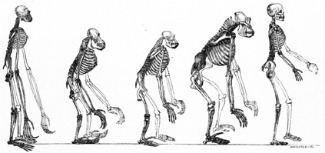Science images

In recent decades the study of visual representations has become one of the most active areas in history of science, technology and medicine. But visual studies of science have a long and interdisciplinary history. As long ago as 1939, George Sarton, considered the founder of history of science as an academic discipline, called for “Iconographic Honesty”, in remarking on the low levels of interest and critical rigor that historians of science applied to portraits compared with texts.
Since the 1970s this field of inquiry has deepened and diversified to include not only portraits, but also a wide range of visual representations produced in scientific practice, of techniques of representation, and of practices of production of meaning. The analysis of the production, circulation and use of visual representations in science has benefited from interaction between such disciplines as history, sociology and philosophy of science, art history, book history, history of education, education studies, and science popularization. Furthermore, it converges on current debates aiming at blurring the traditional distinction between the making and the communication of scientific knowledge.
In fact, images occupy a special place in this context, for their power to encapsulate scientific knowledge, their capacity to communicate to various publics, and their flexibility in the production of meanings by the interaction of producers and users. Moreover, images contain special codes and modes of representation which constrain their intended meanings, and a wide diversity of visual cultures contributes further to shape scientific knowledge through processes of visual appropriation which feed back into production. For its special characteristics, visual knowledge differs from textual knowledge, although there are interesting intersections and interactions between them.
Scientific practice produces a wide range of visual representations of nature which are also tools for the production of new knowledge. Visual representations in science often cut across the categories of research, teaching, and the popular. The study of the reproduction, circulation, and appropriation of images offers an excellent basis from which to understand the shaping of scientific knowledge. The analysis of the production and manipulation of images, the debates around these practices and the making of visual standards can have a major role in our understanding of disciplinary change and in the design of new narratives in history of science. Paradoxically, in spite of the centrality of visual representations in the making of science, its analysis is still underdeveloped due the traditional bias in history of science towards written sources.
The 6th European Spring School in History of Science and Popularization was structured by three lectures by Bleichmar Daniela (University of Southern California), Klaus Hentschel (Univesität of Stuttgart) and Nick Hopwood (from Cambridge Universityand interviewed by UABDivulga on the occasion), a poster session and three workshops which addressed classical questions about the authors, techniques, classification, distribution and interactions with textual and oral knowledge of visual representations, through case studies ranging from the early modern period to the present day, covering Europe and America, and dealing with a large set of representation techniques (including drawing, engraving, lithography and photography).
References
"6th European Spring School of History of Science and Popularization: Visual representations in Science”. Institut Menorquí d’Estudis (IME), Societat Catalana d’Història de la Ciència i de la Tècnica (SCHCT), European Society for the History of Science (ESHS), Centre d’Història de la Ciència (CEHIC), Universitat Autònoma de Barcelona. Coordination: Josep Simon i Alfons Zarzoso. Maó (Menorca), 19-21 May 2011.

